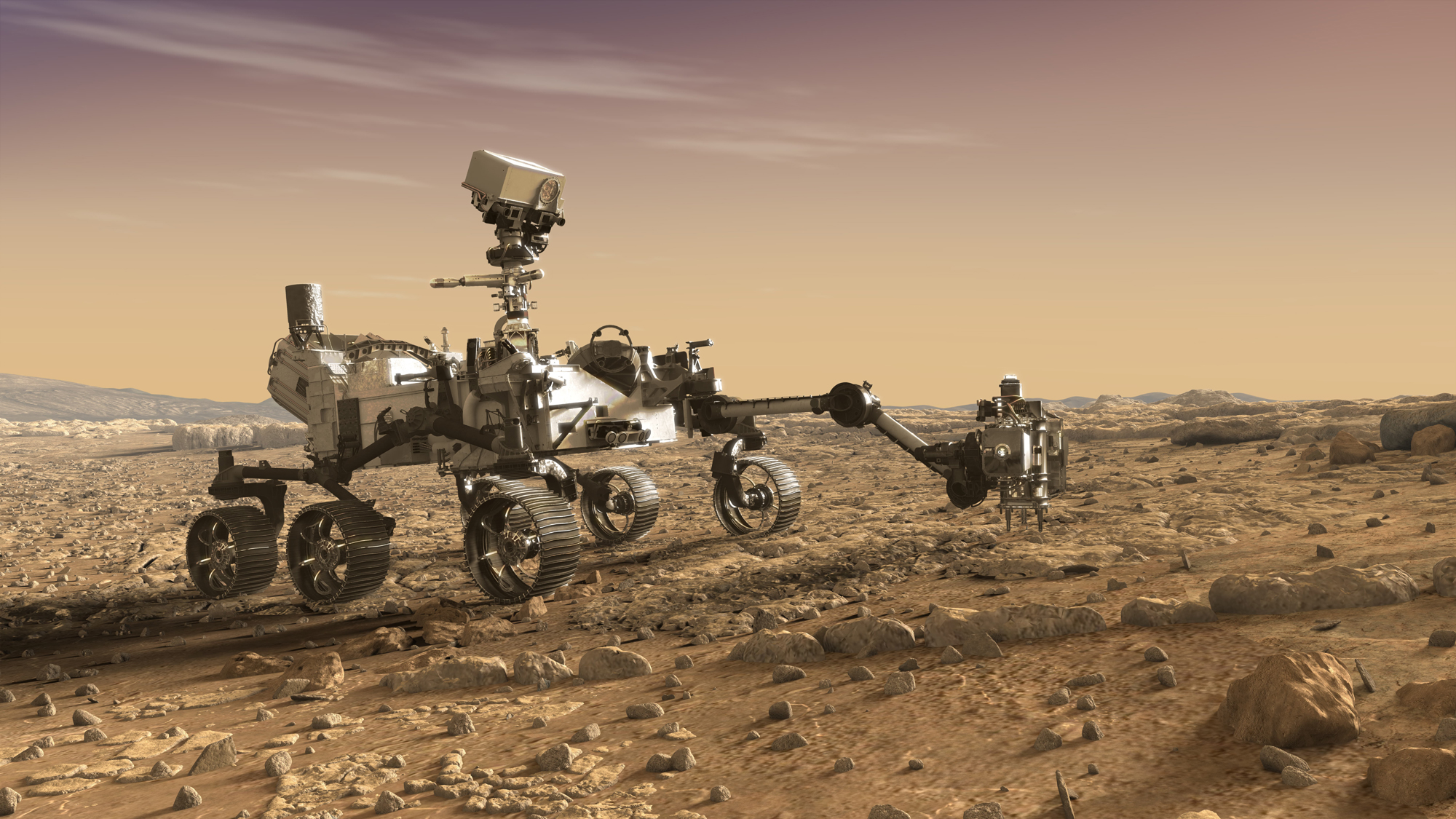
And then there were 155.
The competition to name NASA's next Mars rover has entered the home stretch, with the space agency culling the field from 28,000 student entries to 155 semifinalists.
The 2,300-lb. (1,040 kilograms) robot, which currently goes by Mars 2020, is scheduled to launch this July and touch down inside the Red Planet's Jezero Crater in February 2021. Mars 2020 will search for signs of ancient life, characterize the geology of its surroundings, collect and cache samples for eventual return to Earth and test out tech that will aid human exploration of the Red Planet, among other tasks.
Related: NASA's Mars Rover 2020 Mission in Pictures
And it will do this work with a much catchier name.
"This rover is the first leg of a round-trip mission to Mars that will advance understanding in key science fields like astrobiology," Lori Glaze, director of NASA's Planetary Science Division, said in a statement Monday (Jan. 13). "This contest is a cool way to engage the next generation and encourage careers in all STEM [science, technology, engineering and math] fields. The chosen name will help define this rover's unique personality among our fleet of Martian spacecraft."
NASA selected 4,700 volunteer judges to sort through the deluge of submissions from K-12 students around the country. The newly announced semifinalists proposed a wide variety of names, from the grand (Excelsior) to the playful (Dusty).
Get the Space.com Newsletter
Breaking space news, the latest updates on rocket launches, skywatching events and more!
NASA's three previous Mars rovers — Spirit, Opportunity and Curiosity — were also named by students. Many of the Mars 2020 semifinalists went down a similar path as those winners, proposing monikers such as Ingenuity, Imagination, Inspiration and Courage.
You can find all 155 semifinalists on the Mars 2020 naming-contest website here.
The next cull will whittle the field down to nine finalists, who will get a nice intellectual reward for making it that far. The nine students "will talk with a panel of experts, including Glaze, NASA astronaut Jessica Watkins, NASA JPL [Jet Propulsion Laboratory] rover driver Nick Wiltsie and Clara Ma, who proposed the name for the Mars Science Laboratory rover, Curiosity, as a sixth-grade student in 2009," NASA officials wrote in the statement.
The public will be able to vote for their favorite of the nine finalist names starting in late January, NASA officials added. This public vote will be one factor considered in the selection of the final name, which will be announced in early March.
- Mars 2020: The Red Planet's Next Rover
- Life on Mars: Exploration & Evidence
- Photos: Ancient Mars Lake Could Have Supported Life
Mike Wall's book about the search for alien life, "Out There" (Grand Central Publishing, 2018; illustrated by Karl Tate), is out now. Follow him on Twitter @michaeldwall. Follow us on Twitter @Spacedotcom or Facebook.

Join our Space Forums to keep talking space on the latest missions, night sky and more! And if you have a news tip, correction or comment, let us know at: community@space.com.

Michael Wall is a Senior Space Writer with Space.com and joined the team in 2010. He primarily covers exoplanets, spaceflight and military space, but has been known to dabble in the space art beat. His book about the search for alien life, "Out There," was published on Nov. 13, 2018. Before becoming a science writer, Michael worked as a herpetologist and wildlife biologist. He has a Ph.D. in evolutionary biology from the University of Sydney, Australia, a bachelor's degree from the University of Arizona, and a graduate certificate in science writing from the University of California, Santa Cruz. To find out what his latest project is, you can follow Michael on Twitter.
-
Ryan F. Mercer The rover takes rock samples and caches them for later. It also has a flying drone. I say call it:Reply
Rocky & Bullwinkle.









